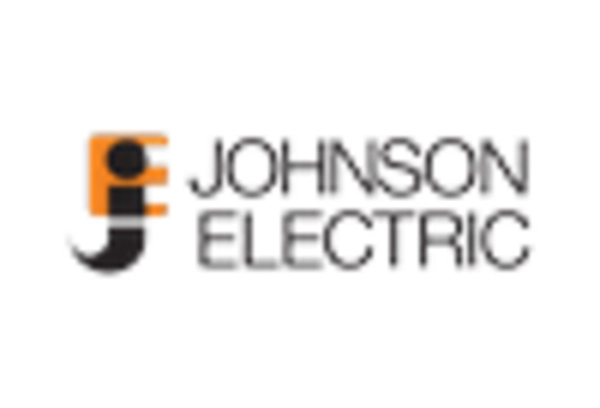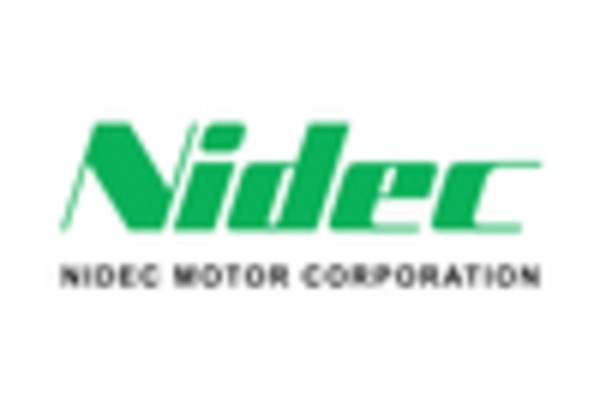Advancements in Medical Devices
The healthcare sector is a critical driver for the micro motors market, particularly due to advancements in medical devices. Micro motors are increasingly utilized in surgical instruments, diagnostic equipment, and rehabilitation devices, enhancing precision and functionality. The US medical device market is anticipated to grow to approximately $200 billion by 2025, with a significant portion attributed to the integration of micro motors. This growth suggests that the micro motors market will benefit from the ongoing innovation in healthcare technologies, as manufacturers seek to improve patient outcomes and operational efficiency through advanced motor solutions.
Growth in Automotive Applications
the automotive sector significantly drives the micro motors market, particularly with the rise of electric vehicles (EVs) and advanced driver-assistance systems (ADAS).. Micro motors are essential components in various automotive applications, including power windows, seat adjustments, and electronic throttle control. The US automotive market is expected to grow at a CAGR of around 5% through 2025, with EVs gaining a larger market share. This shift towards electrification and automation in vehicles suggests a growing demand for micro motors, as manufacturers seek to enhance vehicle performance and efficiency. Consequently, the micro motors market is poised for substantial growth as automotive technologies advance.
Rising Demand in Consumer Electronics
The micro motors market is experiencing a notable surge in demand driven by the increasing integration of micro motors in consumer electronics. Devices such as smartphones, drones, and wearable technology are incorporating these motors for enhanced functionality. The market for consumer electronics in the US is projected to reach approximately $400 billion by 2025, with micro motors playing a crucial role in this growth. As manufacturers strive to create more compact and efficient devices, the reliance on micro motors is likely to intensify. This trend indicates a robust future for the micro motors market, as innovation in consumer electronics continues to evolve, necessitating advanced motor solutions.
Emerging Applications in Home Appliances
The micro motors market is witnessing growth due to emerging applications in home appliances. As consumers demand smarter and more efficient appliances, manufacturers are integrating micro motors into products such as robotic vacuum cleaners, smart washing machines, and automated kitchen devices. The US home appliance market is projected to reach $100 billion by 2025, with micro motors playing a pivotal role in enhancing functionality and energy efficiency. This trend indicates a favorable environment for the micro motors market, as the shift towards smart home technologies continues to gain momentum, driving innovation and demand for advanced motor solutions.
Increased Focus on Robotics and Automation
The micro motors market is significantly influenced by the rising focus on robotics and automation across various industries. As businesses in sectors such as manufacturing, healthcare, and logistics adopt automation technologies, the demand for precise and reliable micro motors is expected to increase. The US robotics market is projected to reach $20 billion by 2025, with micro motors being integral to robotic systems for movement and control. This trend indicates a promising outlook for the micro motors market, as the need for automation solutions continues to expand, driving innovation and development in motor technologies.

















Leave a Comment